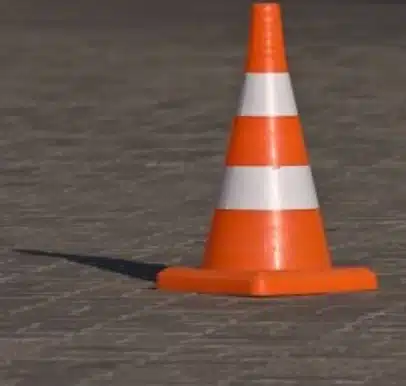
When you ask most businesses what is most important to them, many will come right back with SAFETY.
Of course, that’s the responsible answer. That’s the answer most feel they are supposed to give. It’s the answer that says. . .profit? No, not us. First we all have to be safe.
For the most part, I think a majority of the companies and businesses who say that are being honest. They honestly want safety to be the most important thing. Sadly, when the rubber meets the road, most fail to live up to that lofty goal.
Don’t take it too hard, it’s no one’s fault.
Safety isn’t sexy.
Safety isn’t flashy.
Safety isn’t marketable.
But Safety IS the most important thing.
When you walk into a business, you can just feel it, right? You can sense when a company doesn’t value safety. Now that doesn’t mean that there is a rabid wolverine in the lobby or an active volcano in the parking lot. It’s much more subtle than that, but no less noticeable.
It could be the peeling tile in the lobby that is a slip hazard. It could be the wet floor during a rainy day that no one mops. It could be the way you have to exit the parking lot because of an obstructed view or a busy street.
For some businesses, like healthcare, restaurants, and construction firms, safety is critical. In these areas, lapses in safety can result in someone becoming extremely ill or even dying. So in some businesses, safety really is a matter of life and death.
The good news is that with a little time and dedication you can really nail down your safety practices.
It starts by setting policy. You are going to be safe and you are going to clearly define your standards and practices. It doesn’t have to be complicated – in fact, it should be as simple as it can be. Easier to remember is easier to execute.
Then you have to communicate the vision. Make sure that you take the time to meet with your team to discuss. If you can give your program a great name and market it as heavily internally as you do your product to your customers, that starts to create a culture. Make sure that you reinforce with professional signage and discuss every chance you get. Talk to your team about safety during staff meetings, preshift huddles, and performance appraisals. We are talking about the health and safety of people we work with and serve every day – bring the stories home with a personal touch and you’ll find they have more stickiness with your folks.
“How would you feel if you didn’t take the time to mop the floor and Gladys slipped and fell?” you should ask. By the way, Gladys is a sweet, grey haired 86 year old widow who is everyone’s favorite. She’s been your Customer for about 632 years. No one wants Gladys to get hurt.
But seriously, you have to make it personal. You have to find a way to hit your folks in the gut here a little bit so they’ll care. Find personal or national stories that will help make your point and make sure you stay engaged and excited about safety. Keeping your team and your Customers safe should have an emotional pull that you can use to drive success here. Commit to live these values yourself and then work hard to set a good example for safety.
It would also be a great practice to have a Safety Team that meets regularly and helps craft policy and evaluate progress. This should be made up of Front Line Associates with one designated as your Safety Captain. This kind of involvement from the front line will help with buy in, and let’s face it, peer-to-peer communication is often better received when policy shifts occur.
Finally, you have to recognize great behaviors. When you see someone living your safety culture, make sure they know they are appreciated. It could be movie tickets or a thank you card or a candy bar – but anything quick that can let them know they nailed it will go a long way.
A couple of fantastic things happen as you build this culture. Your team will begin to feel much more valued as you speak the language of safety. They will also begin to police their Leaders, locations, and each other to maintain safe work practices. The great part about this is that valued, engaged Associates give fantastic customer service.
So start by taking a safety walk around your business. From there you can craft your list of items you want to address and put together plans of action to attack. This will become the basis of your daily safety review and your safety checklists. Place a manager or supervisor in charge of the process and check in often to make sure they are well supported and are driving the process forward.
Remember, safety comes in all shapes and sizes – occupational safety, food safety, cash handling security, physical safety – and they all have their own particular pitfalls.
But one thing is certain – Customers won’t forgive a lapse in safety. They are forgiving in nature, but no matter how amazing your product might be, they are not likely to remain loyal to a company with bad safety practices.
Thanks for stopping by and stay safe out there!
Tony Johnson
-Customer Service Leader-
@ServiceRecipe

